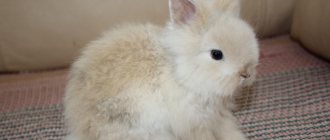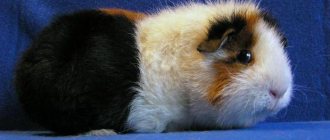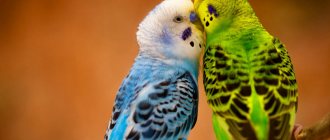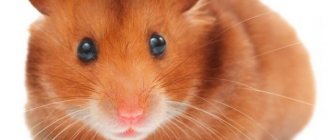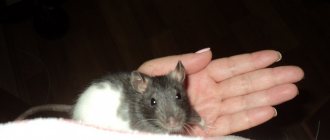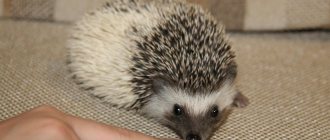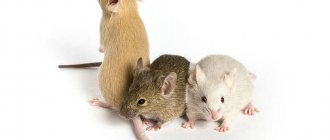There is an opinion that the house becomes much more comfortable and cheerful if an animal is placed in it. Usually the choice falls on traditional cats, dogs, parrots, aquarium fish and various small rodents. Over the past few decades, it has become fashionable to own unusual, exotic animals. One of these is the domestic hedgehog - a very cute creature, perfect for keeping in small apartments.
Meet the hedgehog
Who doesn’t know these cute little animals that are found all over the world! The hedgehog is an omnivorous animal, covered with approximately 10 thousand renewing spines, leading a nocturnal lifestyle. The height of the animals is 12-45 cm, hedgehogs weigh from 0.3 to 1.5 kg.
There are several types of hedgehogs suitable for keeping at home:
- African dwarf. This species has a remarkable feature - the animals do not hibernate and quickly get used to humans.
- The long-eared hedgehog is the smallest, its size does not exceed 20-22 cm. The main charm of this species lies in its 5-centimeter ears, which stick out funny on both sides of the head.
- Most often, the domestic hedgehog is found as a pet. Thanks to selection, the hedgehog adapts perfectly to life in apartment conditions. Variants of coloring of wool and spines are possible.
The forest hedgehog lives in the wild, looks larger than its domestic counterpart and does not take root in an apartment.
Kinds
There are several types of hedgehogs that can be kept in apartment conditions. Let's get to know them better.
African
Hedgehogs of this species are divided into the following varieties:
- Algerian;
- white-bellied;
- Somali;
- South African.
These decorative pygmy hedgehogs are not found in the wild - they were bred artificially. Outwardly, they have much in common with ordinary hedgehogs, but are more modest in size. When this little animal is in a good mood and absolutely calm, its needles cease to be sharp - they become soft and non-prickly.
One of the differences between an African hedgehog and a forest hedgehog is that it almost never stomps when it moves around the house. This animal can easily be trained to stay awake during the day and not at night. You can distinguish an African from a simple forest dweller just by looking at him - these hedgehogs are much smaller.
Steppe
Steppe hedgehogs are big fans of high temperatures. But these animals do not like high levels of humidity. They are divided into the following breeds:
- Daurian;
- Chinese.
Eurasian
Animals of this species are divided into the following breeds:
- Amur;
- Eastern European;
- European.
Eurasian hedgehogs are well prepared for the Russian climate.
Where can I get a hedgehog?
Not being fast runners (the speed of movement of hedgehogs does not exceed 3-4 km/h) and when they meet a person in a park, forest or garden, hedgehogs do not run away, but curl up into a ball. With some effort, you can pick up this ball. But is it possible to keep a forest hedgehog at home? For a number of objective reasons, this is not worth doing. Not only is the forest hedgehog dangerous to human health, as it is a carrier of various infections. A wild hedgehog may be seriously ill and die quickly. He is also not used to living at home and behaves aggressively, biting and scratching.
You should not purchase a hedgehog at the market from unknown persons. Most likely, the poor fellow was caught by accident or was caught because he was weak due to illness or old age.
The best option to get a hedgehog is to buy it at a pet store or from a breeder (there are also such). A hedgehog born in captivity from domesticated parents is perfectly adapted to life in a home and quickly gets used to its new owner.
Choosing a breed
If you want a little prickly friend to live in your city apartment, you can buy a hedgehog. You should ask the seller to see a veterinary report, as there are cases of rabies among hedgehogs. For this reason, it is better not to take a wild forest dweller; moreover, they are often infected with helminth eggs and can be carriers of leptospirosis.
Leptospirosis is an acute infectious disease caused by bacteria of the genus Leptospira. The disease is characterized by damage to the capillaries, often damage to the liver, kidneys, muscles, symptoms of intoxication, and is accompanied by undulating fever.
If you are wondering what breed of hedgehog to buy, Wikipedia will help you figure it out. To make your task easier, we present the classification of these animals here.
Pictured is an African Pygmy Hedgehog
- Algerian;
- Somali;
- South African;
- White-bellied.
- Eastern European;
- Amursky;
- European or Ordinary.
- Indian;
- Collared;
- Dark needle;
- Apodal;
- Ethiopian;
- Eared hedgehog.
They are divided into:
- Algerian.
- White-bellied.
- Somali.
- South African.
Algerian
Daursky
This species prefers high temperatures, but not too high air humidity.
Eurasian
- Amursky.
- Eastern European.
- European.
Amursky
This genus is adapted to Russian conditions.
The best option for an apartment is the African pygmy hedgehog, because it is specially bred for keeping at home.
This species has good immunity and small dimensions.
Features of a hedgehog's life at home
When getting a hedgehog as a pet, many people wonder how long hedgehogs live at home. If you carefully care for a hedgehog, it will live 2 times longer than its forest counterparts - about 10 years.
Before purchasing an original pet, you must take into account that the hedgehog is a nocturnal animal that will walk, eat, make noise, and move in the silence of the night, and during the day it will be quite lethargic; in winter it will probably hibernate for several days or even months.
It is impossible to switch a hedgehog to a daily lifestyle.
Some tips on how to care for a hedgehog at home
Having decided to get a cute prickly friend, you need to prepare for him:
- the cage is a place of shelter, sleep, toilet and food;
- bowls;
- supply of hay and sawdust;
- feed.
How to care for a hedgehog at home? The main thing is to remember that a hedgehog is not a toy. He needs to be fed, bathed, walked, cleaned in his cage, and communicated with him regularly so that he recognizes his owner.
How to feed a prickly cutie at home
In children's fairy tales, hedgehogs eat apples and mushrooms with appetite, but in real life they are not vegetarians. Most of all, hedgehogs love to eat a variety of insects. Cockroaches, crickets, larvae, snails, worms - this is the main diet of the prickly animal in nature. But what do hedgehogs eat at home?
A caring owner will try to provide his pet with insect delicacies, but they can be replaced with the following products:
- raw or cooked minced meat (chicken, beef);
- fish, fresh if possible;
- raw eggs;
- boiled liver;
- fresh fruits and vegetables.
Keeping hedgehogs at home means that the animal will not receive salty, spicy, fried or sweet foods from the owner’s table, no matter how much one would like to pamper the pet. As a treat, you can give bread soaked in milk or cat canned food.
The hedgehog should have 2 bowls: for food and water. Fresh water is poured daily.
Hedgehogs, like other pets, should be fed twice a day to avoid the problem of obesity.
What to feed?
The diet of a domestic hedgehog must be organized correctly. In their natural environment, these animals feed on worms, beetles, rodents and midges. At home, pets should be offered the following food:
- low-fat meat (beef, veal, chicken, turkey) boiled or raw;
- offal;
- fish;
- live insects;
- bread;
- pasta;
- porridge;
- dairy products – cottage cheese, kefir, fermented baked milk, milk;
- insects - Madagascar cockroaches, crickets (available at pet stores);
- carrot-sugar mixture (it is prepared from grated carrots, egg powder, finely chopped chicken eggs, a handful of crushed white crackers).
Hedgehog toilet
Is it possible to train a hedgehog to use the toilet the way cats, small dogs and even rats and raccoons do? It is possible, although you will have to put in a lot of effort to achieve the result.
Only young hedgehogs can be trained to place the litter tray in a certain corner of the cage. Old or wild animals will not understand what is wanted from them.
In nature, the hedgehog uses its own chosen places in the forest for toileting. Therefore, at home, you need to take a close look at which place in the cage your pet chooses for toilet needs. Then a tray with filler is placed in this place. It is better to use sawdust rather than sand, which sticks to the needles. So that the hedgehog understands what they want from him, his feces or a cloth soaked in urine are placed in the tray.
For a prickly pet, a plastic tray is suitable, which is sold for large rodents.
You should clean the toilet no more than once a week - a hedgehog will not use a sterile, odorless tray for its intended purpose.
Bowls for food and water should not be placed near the tray.
Description of hedgehogs
The hedgehog family includes 2 subfamilies. These are real and gymnur or rat hedgehogs. Gymnurs have a body covered with hard hair, a long tail, and an elongated muzzle.
They look more like a big rat. Real hedgehogs look a little different:
- body size 10-44 cm. Animals with a body length of up to 15-25 cm are kept at home. Weight from 200 g. Forest inhabitants can weigh up to 1.5 kg;
- the back, sides and head are covered with a shell of needles. The muzzle, limbs and belly are distinguished by soft wool. Adult hedgehogs have up to 6 thousand spines on their bodies. Their length is 3 cm, the surface is smooth. The needles have gray and brown bands, which alternate with light stripes. Powerful muscles are attached to the shell, which allow animals to quickly gather into a ball or straighten their body;
- the length of the tail is 1-3 cm. It is often hidden under the needles;
- The animals have an elongated muzzle. In healthy individuals, the nose is always wet;
- the teeth are sharp and small. The front incisors are especially developed;
- Animals have 4 five-fingered limbs. The front ones are shorter than the rear ones. The fingers have long and sharp claws. Being in their natural environment, they constantly wear out. The claws of a domestic hedgehog are cut off;
- hedgehogs are nocturnal inhabitants, so their organs of vision are poorly developed, but their organs of hearing and smell are well developed;
- In summer, animals are very active. In late autumn they hibernate. At the same time, their pulse slows down to 20 beats per minute, and their breathing rate - 1 time per minute. They remain in this state until spring. They emerge from their burrows when the air temperature rises to 15 0C. Some types of hedgehogs that are kept at home sleep only 2-3 days;
- animals are predatory. They feed not only on insects, but also on small vertebrates, lizards, and frogs. They may eat chicks or bird eggs. They replenish the body’s vitamin reserves with berries and grass. Hedgehogs quickly adapt to new conditions and get used to new food.
- Animals have poorly developed sweat and sebaceous glands. A domestic hedgehog does not emit any foreign odor. Does not cause allergies.
Representatives of hedgehogs are solitary. In nature, they occupy the burrows of other animals or hide under the roots of trees. They make a hole out of dry leaves, grass and soft moss.
They try to stay in their shelter all day long; at night they crawl out of their holes in search of food. Individuals determine their territory, in which they hunt, and jealously guard it.
When keeping at home, it is necessary to take into account the characteristics of hedgehogs. The pet is suitable for people who are owls by nature. In nature, animals divide all living organisms into 2 groups: food and danger. A person can be regarded as an enemy, so hedgehogs often show aggressiveness and can bite.
Hedgehogs mature at 12 months. During the season, the female brings 1-2 litters. Pregnancy lasts 49 days. Each can have 2-5 cubs.
They are born blind with soft spines. The real shell is formed already on the 15th day.
The cubs feed on milk. From the age of one month they begin to emerge from the hole. The mother teaches them to get food.
Cleanliness is the key to health: hedgehog hygiene
Many pet hedgehogs are carriers of ticks and fleas. Insects injure the animal's skin and carry various infections, so they need to be gotten rid of. This can be done by washing your pet.
How to wash a hedgehog at home?
- Preparation. To bathe your hedgehog, use flea shampoo for rodents. Any other shampoos are not suitable, as they can cause intoxication and dry out the animal’s skin extremely strongly. The water temperature is +360. Detergents are not added to the water.
- The washing up. After wetting the hedgehog's spines under running water or in a basin, take a small amount of shampoo and use a toothbrush to treat the spines of the hedgehog's coat. A brush soaked in a soap solution is quickly passed from head to tail, being especially careful in the head area so that water or foam does not get into the ears. You can run a soapy hand over the needles.
- Rinse. First rinse the back under running water or in a basin, then carefully turn the hedgehog over and rinse the stomach. Water can be applied by hand.
- Drying. Do not use a hair dryer, this will cause the animal to overheat and cause unnecessary stress. After washing the hedgehog, wipe it with a towel, not forgetting the stomach, then you can place the pet in a carrier or basket under a lamp until completely dry, periodically running your hand over the spines to ensure air access. The hedgehog will become completely dry in 1-2 hours.
- Apply 1-2 drops of oil to the prickly coat and tail area to moisturize the skin.
Only after the hedgehog is completely dry can he be allowed to run around the house, otherwise he may get sick by catching a cold.
Since bathing is stressful for a hedgehog, it is not worth carrying out this procedure more often than once every 2-3 months. Therefore, if the needles become dusty or the paws are dirty, you can wipe them with a damp cloth.
How to make a cozy house?
Of course, you can let the hedgehog wander around the apartment, but in this case you need to be prepared for the fact that the wires will be chewed, feces will be found in the most inappropriate places, and the hedgehog itself may get stuck somewhere or get injured.
To make both the hedgehog and its owner comfortable, it is better to keep the prickly friend in an enclosure, regularly letting it run around the house.
To keep a hedgehog at home, a metal cage or plywood box with air holes is perfect; you can also fence off part of the room (for example, a balcony). The aquarium cannot be used because the air stagnates in it.
For a hedgehog to live a full life, 1 m2 of its own living space is enough.
How to set up an enclosure for a hedgehog:
- the enclosure must be placed where there are no scorching rays of the sun, no heating devices, or drafts;
- it should have a toilet, a feeding trough, a drinking bowl;
- you can install a running wheel;
- the floor is covered with sawdust or grass.
It is convenient if the bottom of the cage extends - in this case, the cleaning process is greatly simplified. To avoid the appearance of the smell inherent in forest inhabitants in the apartment, owners of a pet hedgehog need to clean the feeding area, cage, and toilet every day.
You definitely need to make a house in the cage; privacy is important for the hedgehog. The inside of a wooden house is lined with grass, moss, leaves or hay. In such a nest house, the hedgehog will be happy to tinker and sleep.
Reproduction
The breeding season for hedgehogs begins immediately after emerging from hibernation. The animals become active, the males start fights for the females, and the hedgehogs themselves build nests.
Females become very caring mothers. They carry 2-8 cubs for 5-8 weeks. Hedgehogs are born blind, with soft pseudo-needles, up to 10 cm in size and weighing up to 20 grams. After two weeks, the weight reaches 60 grams, and the needles harden. The offspring are ready for independent life two months after birth.
A peculiarity of hedgehog reproduction is the duration of the mating season. The disadvantage of this is the death of autumn babies who did not have time to gain the weight of 800 grams necessary for hibernation.
Nobody canceled hibernation!
Keeping hedgehogs at home means that the animal must be given the opportunity to hibernate for a couple of winter months. If you force your pet to abandon its usual way of life, the hedgehog will live much less than it could, and will be lethargic and painful.
The animal's hibernation period occurs at the end of October - beginning of November.
How to prepare your pet for this important stage in his life:
- With the arrival of autumn, more high-calorie foods are introduced into the hedgehog's diet. This way the hedgehog will accumulate fat deposits - a reserve of energy for sleep.
- In a calm, cool place, where the air temperature does not exceed +50 - +70, a shelter is equipped. The nest can be built from rags, hay, dry leaves, straw.
- If you notice that the hedgehog is becoming lethargic and not eating well, you should take it to the nest and not disturb it. Usually hibernation lasts until the end of February - beginning of March.
Price
You can buy a prickly animal at a pet store or nursery. The price of a hedgehog depends on a number of factors, including the type of animal, age, and color. The most affordable common hedgehogs start from 3,000 rubles. Exotic African hedgehogs can cost 12-15 thousand rubles.
When purchasing, it is important to purchase a healthy pet with clear eyes, without sagging skin, spots, or bumps on the skin. The baby's nose should be dry, without crusts. A sign of a sick hedgehog is “staggering syndrome” when walking.
Individuals with a characteristic gait usually have several diseases. The tummy of a healthy pet is evenly covered with fur, without bald spots or tangles. The acquisition of a prickly friend will definitely bring bright colors to the usual home life of any person.
Hedgehog and other animals in the house
If you really want to have a hedgehog, and there are already other animals in the house (cats, dogs, hamsters or parrots), is there any hope of making them friends? Experts give a clear answer: no, in real life there cannot be friendship between animals.
In the best case, all the monasteries of the house will live, simply not noticing each other and communicating only with the owner. A hedgehog will not make friends with either a dog or a cat, since these animals perceive the world differently and do not contact each other.
You should not place a hedgehog in the same cage with hamsters, rats, or chinchillas - this can end sadly for the rodents.
